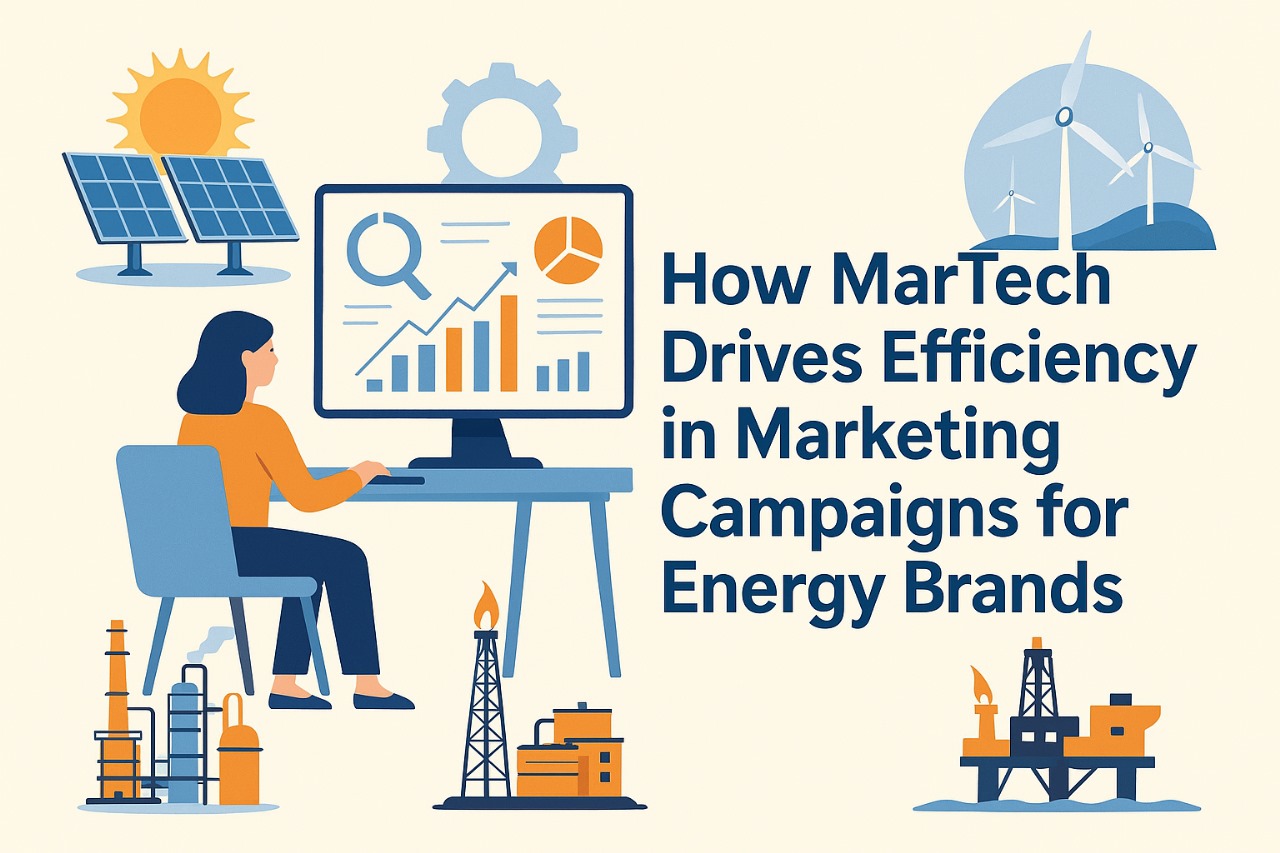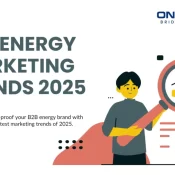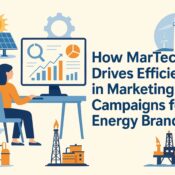
How MarTech Drives Efficiency in Marketing Campaigns for Energy Brands
Hey there! If you’re in the energy game—whether it’s solar panels, wind turbines, or good old oil and gas—you know marketing isn’t just slapping a logo on a billboard anymore. It’s 2025, and the world’s moving fast. Customers want clean energy options yesterday, regulators are breathing down your neck, and competitors are everywhere. So how do you stand out without burning through your budget or your team’s sanity? Enter MarTech—marketing technology. It’s like a superpower for energy brands, streamlining campaigns and boosting efficiency in ways that’d make even a wind farm jealous. Let’s break it down and see how it’s changing the game.
Automating the Boring Stuff—More Time for Big Ideas
Energy marketing isn’t glamorous all the time. You’ve got emails to send, social posts to schedule, and data to track—tasks that eat up hours. MarTech tools like HubSpot or Mailchimp swoop in here with automation magic. Imagine setting up a drip campaign for a solar panel launch: one tool sends a “Hey, interested in solar?” email, then follows up with a case study a week later—all without you lifting a finger after the setup. At OneMind, where I’m interning, I’ve seen how this frees up time. Instead of manually posting to LinkedIn about a new wind project, we use a scheduler like Metricool to plan a month’s worth of content in one go. That leaves us room to brainstorm bold ideas—like a webinar on net-zero goals—rather than drowning in busywork.
For energy brands, this is huge. You’re often juggling B2B clients (like utilities) and B2C folks (homeowners eyeing solar). Automation keeps both audiences in the loop without doubling your workload. Less time on grunt tasks means more focus on strategy—and that’s where efficiency turns into wins.
Targeting the Right People, Not Just Everyone
Ever tried selling solar panels to someone who doesn’t own a roof? Waste of time, right? MarTech’s data tools—like Google Analytics or SEMrush—help energy brands zero in on who actually matters. These platforms dig into demographics, search habits, and even competitor moves. Say you’re an energy brand pushing EV charging stations. MarTech can show you that 30-45-year-olds in urban India are Googling “EV charger costs” like crazy. Suddenly, your LinkedIn ads aren’t scattershot—they’re hitting EV enthusiasts with precision.
I’ve been playing with this at OneMind. We ran a campaign for a client and used analytics to find their sweet spot: small businesses in renewable-heavy regions. By focusing ad spend there instead of blasting everyone, we cut costs by 20% and doubled click-throughs. For energy brands, where budgets can be tight and audiences are niche (think fleet managers or eco-conscious homeowners), this targeting is a lifeline. It’s efficiency in action—less waste, more impact.
Real-Time Insights to Pivot Fast
Energy markets move quick. Oil prices spike, a new solar subsidy drops, or a storm knocks out power grids—suddenly your campaign is off-key. MarTech gives you real-time data to pivot before you’re stuck with a dud. Tools like Metricool or ClickUp (which we’ve been geeking out over at OneMind) track campaign performance as it happens. Are your Twitter posts about energy-saving tips flopping? Swap them for a video on rising electricity costs—stat. I saw this firsthand when a client’s Instagram ad wasn’t landing. We checked the analytics mid-flight, tweaked the copy to highlight “save 30% on bills,” and watched engagement jump overnight.
For energy brands, this agility is clutch. You’re not locked into a six-month plan when the market shifts. Whether it’s adjusting a fossil fuel campaign after a policy change or pushing solar during a heatwave, MarTech keeps you nimble—and efficient with every rupee spent.
Personalization That Feels Human, Not Creepy
People don’t want generic pitches—they want solutions that fit their lives. Energy’s personal too: a homeowner needs a solar quote, a factory wants bulk wind pricing. MarTech’s AI—like ClickUp Brain or ActiveCampaign—cranks out personalized content at scale. It can pull data (say, a lead’s location or past inquiries) and tailor an email: “Hey Raj in Mumbai, here’s how solar cuts your monsoon bills.” At OneMind, I’ve seen this flip lukewarm leads into hot ones—personalization boosts open rates by 26%, per stats floating around.
Energy brands benefit big here. You’re not just selling watts; you’re selling savings or sustainability. MarTech makes it feel like a one-on-one chat, not a mass blast, without you typing 500 custom emails. Efficiency? Check—more conversions, less effort.
Measuring ROI—Because Numbers Don’t Lie
Here’s the kicker: energy marketing’s often a long game—think big contracts or slow homeowner decisions. How do you know what’s working? MarTech’s analytics—like Tableau or Google Analytics—tie every campaign to hard results. Did that LinkedIn post about net-zero goals land a utility deal? Did your Google Ad spend convert into solar installs? You’ll see it in clean dashboards. At OneMind, I’ve been tasked with pulling these numbers, and it’s eye-opening—last month, we traced a 15% follower spike to one webinar ad.
For energy brands, this clarity cuts the fat. You ditch underperforming channels (bye, overpriced print ads) and double down on winners (hello, targeted LinkedIn). It’s efficiency through proof—spend smarter, not harder.
Bridging the Omnichannel Maze
Energy customers don’t live on one platform—they’re on LinkedIn reading whitepapers, Instagram scrolling Reels, or your site checking prices. MarTech tools like Zapier or HubSpot tie it all together. Post once, and it syncs everywhere; a lead clicks an ad, and it’s logged in your CRM. I’ve messed with this at OneMind—connecting a client’s socials to their email list shaved hours off their workflow. For energy brands, this omnichannel glue means consistent messaging (e.g., “Go green with us”) across touchpoints, without the chaos of managing it manually.
Why Energy Brands Need MarTech Now
Energy’s not your average industry. You’ve got complex products, long sales cycles, and a mix of B2B and B2C audiences—plus, sustainability’s the buzzword everyone’s chasing. MarTech’s not optional; it’s how you keep up. It cuts time, sharpens focus, and proves your worth in a crowded market. Take solar: a brand using MarTech can automate lead nurturing, target eco-warriors, and track every install back to the first click—efficiency that turns prospects into panels.




